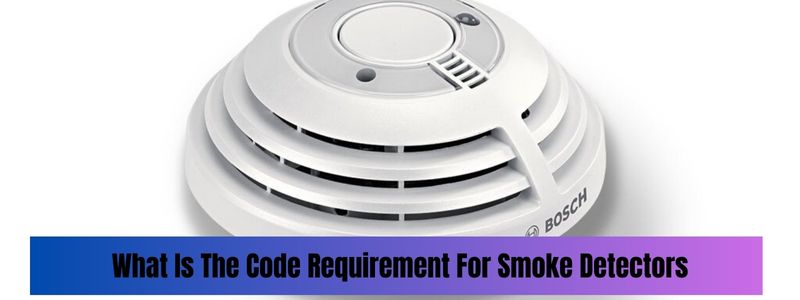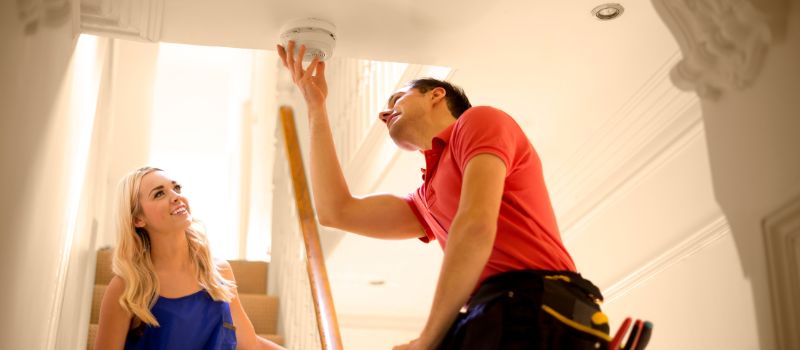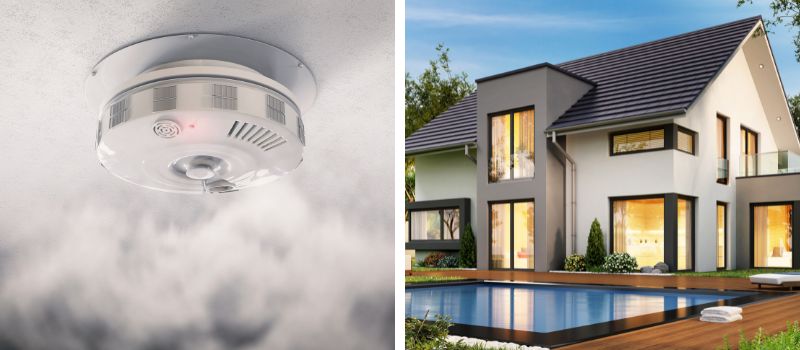When it comes to fire safety, smoke detectors are indispensable devices that play a vital role in detecting early signs of fire. To ensure maximum effectiveness, it is important to understand the coverage area requirements for smoke detectors.
In this expert guide, we will explore the coverage area recommendations as outlined by the National Fire Protection Association (NFPA) 72 standards. By following these guidelines, you can create a safer environment for your family and build peace of mind. Let’s dive in and explore the coverage area for smoke detectors.
What is the coverage area for smoke detectors NFPA 72?
The National Fire Alarm Code, NFPA 72, says that spot-type smoke detectors on smooth ceilings should be placed every 900 square feet (30 feet on center). Even though this is just a suggestion, almost all companies that make smoke alarms follow this rule.
NFPA 72: The Benchmark for Fire Safety
The NFPA 72, known as the National Fire Alarm and Signaling Code, is a standard providing the latest safety provisions to meet the changing needs of fire detection and alarm systems. It is a product of collective knowledge from a wide range of experts across different fields, contributing towards developing a safer world.
Following these standards not only ensures compliance with regulations, but more importantly, it maximizes protection against fire-related hazards.
Unraveling the Coverage Area for Smoke Detectors
The placement of smoke detectors, according to NFPA 72, is crucial. These detectors are the first line of defense when a fire breaks out. Optimally placed, they can provide early warnings, allowing individuals to evacuate and fire response teams to react promptly, potentially saving lives and reducing property damage.
The NFPA 72 provides clear guidelines on the required coverage area for smoke detectors. To summarize, each detector should cover a maximum floor area of 900 square feet. Additionally, no point in the room or space should be more than 21 feet horizontally from a detector.
In rooms with ceilings 10 to 12 feet high, detectors should not be more than 30 feet apart. This spacing reduces when ceiling height increases. For ceilings between 12 to 15 feet, detectors should be spaced 22 feet apart, and for ceilings between 15 to 20 feet, detectors should be 18 feet apart. The NFPA recommends considering both floor and ceiling coverage when planning detector placement.
Guidelines for Specific Areas
In terms of specific spaces, NFPA 72 specifies that smoke detectors be installed in every sleeping room, outside of each separate sleeping area, and on every level of the dwelling, including basements. For multi-story residences, detectors should be interconnected so that if one detector triggers, all detectors will alarm.
Adherence to NFPA 72: A Matter of Safety
Properly adhering to NFPA 72’s guidelines isn’t just about regulatory compliance, it’s about providing an environment that is safe from fire-related accidents. By installing smoke detectors in accordance with these guidelines, you are taking a significant step toward the safety and security of the building occupants.
Frequently asked question
What are the specific requirements for smoke detector placement according to NFPA 72?
The National Fire Protection Association’s standard NFPA 72, requires that smoke alarms should be installed in every sleeping room, outside each sleeping area and on every level of the home. In general, detectors should be located on the ceiling or wall at a distance no greater than 12 inches from the ceiling. Moreover, they should be installed at least 10 feet from cooking appliances to minimize false alarms.
What does the ‘coverage area’ mean in the context of NFPA 72?
The ‘coverage area’ for a smoke detector according to NFPA 72 refers to the space in which the detector should be able to effectively sense smoke and trigger an alarm.
For a standard smoke detector, this area is typically a 900 square feet space; that is, a 30 feet by 30 feet area for a single smoke detector. However, this may vary depending on the specific model of the detector and the layout of the building.
How often should smoke detectors be tested and maintained according to NFPA 72?
NFPA 72 requires that smoke detectors be tested at least once a year to ensure they are functioning correctly. Moreover, detectors should be replaced every 10 years from the date of manufacture, not the date of installation.
Regular cleaning to remove dust and cobwebs is also recommended, along with battery replacement (for battery-operated models) at least once a year or whenever the low battery signal chirps.
What are the considerations for smoke detector placement in high-ceiling areas as per NFPA 72?
For rooms with high ceilings (those above 10 feet), NFPA 72 has specific guidelines. Smoke, heat, and combustion products rise to the ceiling and then spread horizontally, meaning that a detector installed too high might delay the alarm in the case of a fire.
Therefore, in rooms with ceiling heights between 10 feet and 20 feet, detectors should be placed 3 feet to 18 feet below the ceiling.
Does NFPA 72 provide guidelines for smoke detectors in commercial buildings?
Yes, NFPA 72 also provides guidelines for smoke detectors in commercial buildings. In addition to the residential requirements, commercial buildings often require more extensive smoke detection systems that may include duct detectors in HVAC systems, and additional detectors in high-risk areas such as storage spaces or kitchens.
The specific requirements can vary depending on the size, layout, and use of the building. Always consult with a fire protection professional or the local fire department for specific guidelines for your building.
Conclusion
The coverage area for smoke detectors according to NFPA 72 is critical information for those concerned about fire safety. By adhering to these guidelines, you not only comply with regulations but also significantly reduce the risk of catastrophic damage caused by fire.
Remember, smoke detectors are our first line of defense against fire. The earlier a fire is detected, the faster it can be controlled, mitigating potential harm. Stay informed, stay prepared, and keep safe.
Read more:
- What Is The Coverage Area Of A CO Detector?
- How Many Smoke Detectors Per Area?
- How Many Smoke Detectors Are Needed In A 30×30 Foot Room?
- How Many Smoke Detectors Do I Need for A 2000 Square Foot house?

Edward’s expertise in smoke detectors is particularly noteworthy. He has conducted extensive research on the latest advancements in smoke detector technology and has worked closely with manufacturers to develop cutting-edge products that can detect fires more accurately and quickly.




